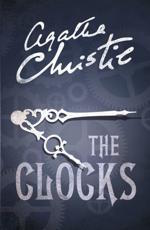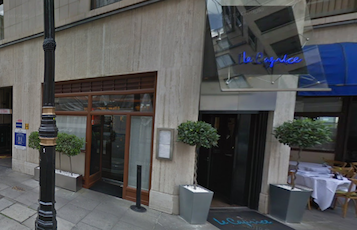
Poirot Score: 70
The Clocks
☆☆☆
Explanation of the Poirot Score:
Christie yet again pulls off something entirely new: how do you solve the murder of a completely unidentified body?
The Clocks as a whodunnit, has many good clues and is a highly entertaining read. Christie kept hidden some information until three pages from the end, so it is impossible to guess the plot in its entirety. The Clocks is an odd heterogeneous mixture of Cold War Communist spy thriller, the very red herring sub-plot, superimposed on a main whodunnit. It feels highly improbable that both should happen in the same sleepy street, but perhaps that is her point. In 1960s England when everyone is busy, no one notices anything, anymore. Christie had made several previous attempts at a blended melange of murder mystery and adventure thriller, but this is one of the most successful.
Click here for full review (spoilers ahead)
Trivia
Dedicated to my old friend MARIO with happy memories of delicious food at the CAPRICE

Le Caprice, 20 Arlington Street, London, was located behind the Ritz Hotel in St James’s. Mario Gallati, former Maître d’ of The Ivy, opened the restaurant in 1947. It soon became a popular dining place for the rich and famous. It closed in 2020 due to Covid-19, and does not seem to have re-opened in 2021. Christie often wrote about this area of London. Tommy and Tuppence meet in The Secret Adversary (1922) at Dover Street Station, and they dine at The Ritz. There is much speculation which hotel At Bertram’s Hotel (1965) is based on, but that book is coming soon….
Christie was very fond of good food, and knew about cuisine as she had spent much of her childhood in French hotels. Christie taught herself to cook when married, which she found a revelation, and fun too. In the 1920s your servants usually left a cold meal for you on the one night they had off! In her novels, Christie was often scathing about the standards of most domestic and hotel British food and coffee.
Stilettos
A rather flashy shoe and a stiletto heel that had become detached from it
A stiletto is the diminutive for stilo, the Italian for dagger. A stiletto from the 17th century was a sharp little dagger favoured by Venetians.
Fashionable people have always enjoyed wearing heels, whether Louis XV or Sir Elton John.
Give a girl the right pair of shoes and she’ll conquer the world.
Marilyn Munroe
Marilyn Munroe’s shoes designed for her by Ferragamo
Salvatore Ferragamo (1898-1960), a shoe designer, was born in Naples. After learning his trade, he immigrated to the USA, and was credited with inventing the stiletto heel in the 1950s. High heels do make legs look longer and thinner. He made shoes in Hollywood for the stars, on and off the sets, like Marilyn Munroe and Judy Garland.
Ferragamo then moved back to Florence, where the business is still flourishing and owned by his descendants. By the 1960s the design of stiletto heels was so popular that every High Street shoe shop sold them to office girls. By the latter 1960s the shoes were referred to as stilettos, rather than ‘shoes with a stiletto heel’, as Christie does in this text. Shoes vary at the whim of fashion, but despite being excruciatingly uncomfortable to wear, and extraordinarily bad for the metatarsal bones of the foot, they are still popular. Because of the heel’s tiny surface area, the pressure exerted on the ground is enormous, supposedly larger than an elephant’s tread.
As a child in the early 1960’s an aunty at a wedding danced with her stiletto onto my foot, and I still have the scar. The pressure exerted by the heels can damage parquet flooring. Stilettos are also disastrous to wear at occasions where you have to walk over grass, as you sink into the mud, and pull off the heels.
Au Pair
‘A big blonde Nordic girl wearing gay-coloured clothing
Yes, yes, I cook.
According to the OED the French term meaning ‘on equality’ was coined at the end of the 19th century for a young girl wishing to learn the language of another country, and rendering some sort of domestic services (child care, cooking etc) in return for free board, lodging and being welcomed into family – not a domestic servant but au pair with the family.
Christie was always observing changes in society. After the Second World War domestic servants in Britain had almost disappeared, except in extremely wealthy households. Working char women who popped in at an hourly rate once or twice a week replaced domestic staff: see Mrs McGinty’s Dead [1951]. There was also a rise in the popularity of au pairs, usually young girls wishing to learn English in exchange for light domestic duties and free board and lodging. By the 1960s there were Au Pair agencies, matching girls with families. This book features both a Norwegian and a Danish au pair. Of course, English girls went all round the world au pairing too. My sister, Wendy, went off to Helsinki to be an au pair in her gap year in 1971, and kept in touch with that family for many years.


